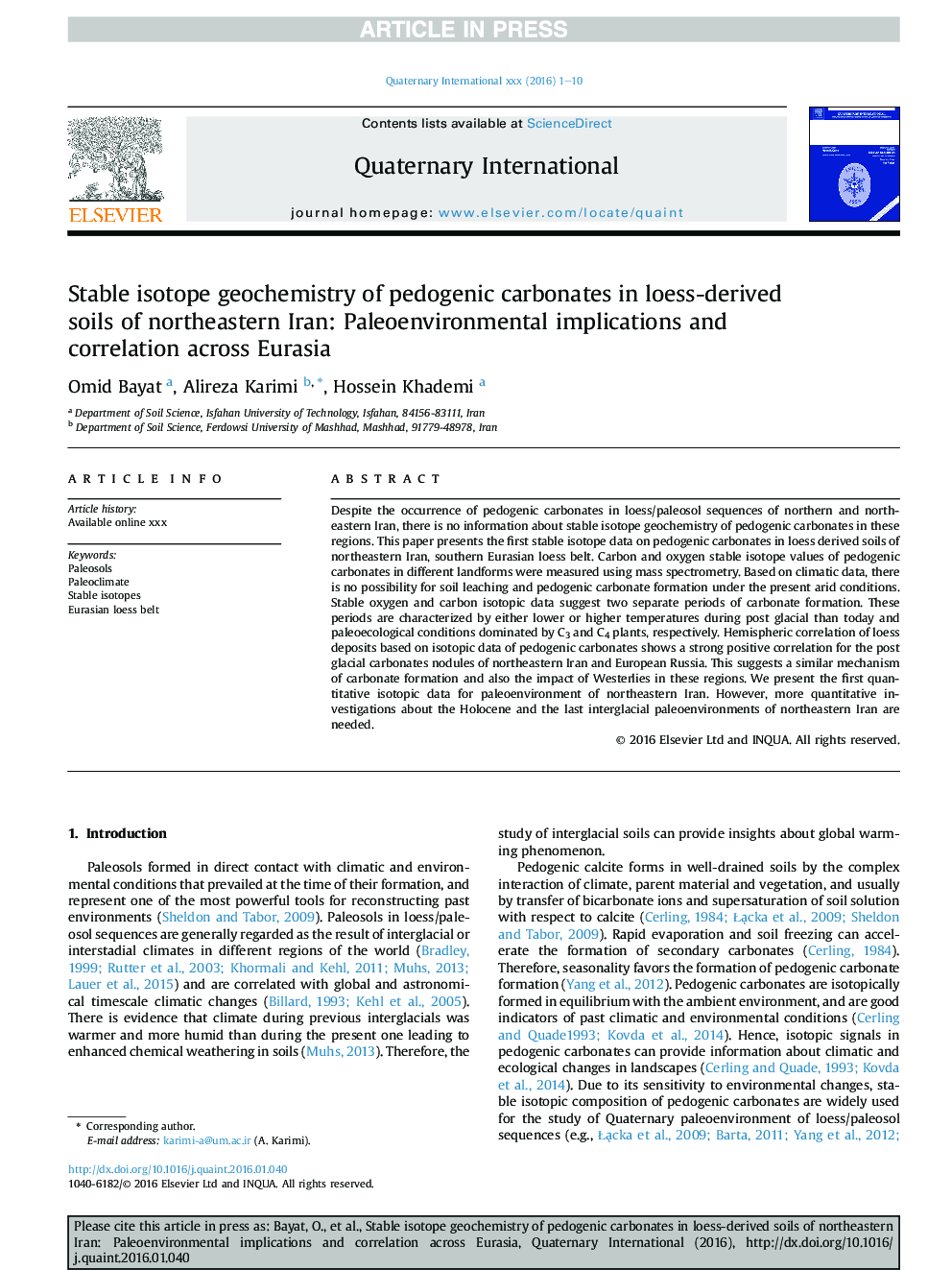| Article ID | Journal | Published Year | Pages | File Type |
|---|---|---|---|---|
| 5113731 | Quaternary International | 2017 | 10 Pages |
Abstract
Despite the occurrence of pedogenic carbonates in loess/paleosol sequences of northern and northeastern Iran, there is no information about stable isotope geochemistry of pedogenic carbonates in these regions. This paper presents the first stable isotope data on pedogenic carbonates in loess derived soils of northeastern Iran, southern Eurasian loess belt. Carbon and oxygen stable isotope values of pedogenic carbonates in different landforms were measured using mass spectrometry. Based on climatic data, there is no possibility for soil leaching and pedogenic carbonate formation under the present arid conditions. Stable oxygen and carbon isotopic data suggest two separate periods of carbonate formation. These periods are characterized by either lower or higher temperatures during post glacial than today and paleoecological conditions dominated by C3 and C4 plants, respectively. Hemispheric correlation of loess deposits based on isotopic data of pedogenic carbonates shows a strong positive correlation for the post glacial carbonates nodules of northeastern Iran and European Russia. This suggests a similar mechanism of carbonate formation and also the impact of Westerlies in these regions. We present the first quantitative isotopic data for paleoenvironment of northeastern Iran. However, more quantitative investigations about the Holocene and the last interglacial paleoenvironments of northeastern Iran are needed.
Keywords
Related Topics
Physical Sciences and Engineering
Earth and Planetary Sciences
Geology
Authors
Omid Bayat, Alireza Karimi, Hossein Khademi,
